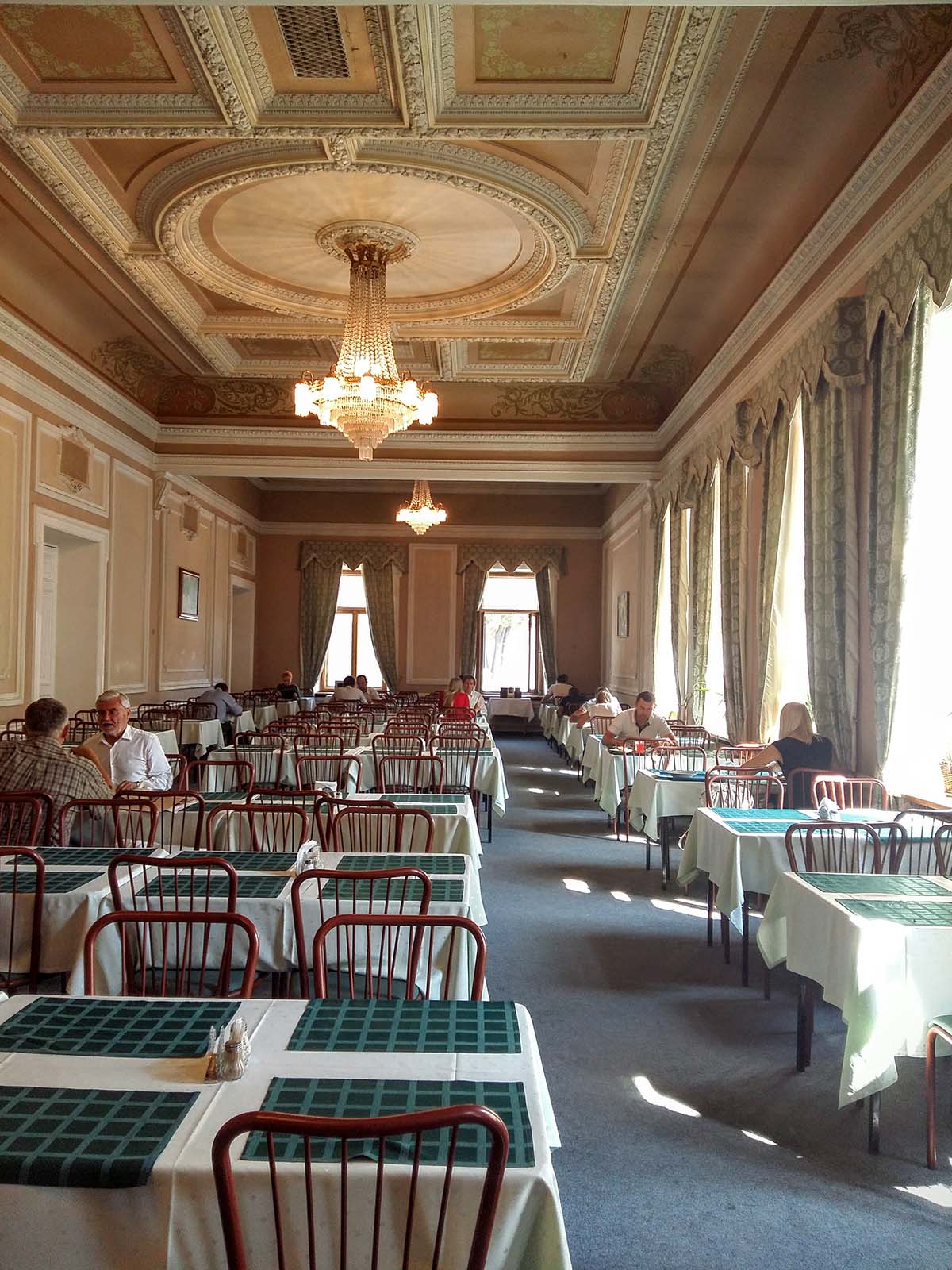The Zaitsev mansion was built according to the design of the architect Vladimir Nikolaev and is one of the characteristic examples of Lipok development of the late 19th – early 20th centuries, located opposite buildings of the Supreme Council of Ukraine and Galperin’s mansion. The house has an enfilade layout with perimeter rooms. Two internal capital longitudinal walls divide the house plan equally. The stucco ceilings and cornices, tiled stoves and other finishing details have been preserved. In the semi-basement, where internal stairs led, there were rooms for servants, storage rooms and two kitchens – for the owners and for the servants.
In the early 1880s, sugar industrialist Marcus Ionovich Zaitsev bought a plot of land from the widow of the owner of a number of estates in the center of Kyiv. On May 24, 1897, construction began on a house designed by Nikolaev (Ascension Church on Baikovo Cemetery, Galperin’s mansion, Tereshchenko mansion, Liberman mansion, national philharmonic, monument to Khmelnitsky). The Zaitsevs lived in the mansion until 1918 because they did not want to leave their property and hoped that the turbulent times would pass. But in the end, the family left for Odessa, leaving not only the property, but also all the furniture, and taking with them only jewelry. Since 1919, the former Zaitsev mansion was occupied by the Chinese consulate, which is why the house escaped destruction and robbery during the unrest and change of power. A description of the property, dated November 25, 1920, has been preserved: among the furniture there are 24 soft set chairs, 36 soft armchairs, 14 wardrobes, 17 sofas, a library cabinet with books, a piano and grand piano, billiards, 7 mirrors, 10 chandeliers and much more.
After the capture of Kyiv by the Poles, the commander-in-chief, General Edward Rydz-Smigly, and his wife also lived here. With the establishment of Soviet power, the mansion was nationalized, but until 1922 the Chinese consulate continued to be located there. In August 1922, the communal department of the Kyiv provincial executive committee leased the house for 5 years to the administration of the authorized people’s committee for foreign affairs. NKID employees settled here, and in the late 1920s and until the mid-1930s there was a consulate of the Republic of Poland, headed by the chairman of the Polish mission, Rozhkowski. After the Great Patriotic War, the “Knowledge” society of the Ukrainian SSR was located in the mansion. Later, together with neighboring houses in the block, the former Zaitsev mansion became the property of the Council of Ministers of the Ukrainian SSR and was merged with the estate Polyakov mansion on Grushevskogo Street, 22 into a single complex. Nowadays it is used as a canteen for government affairs.
Where is the Zaitsev mansion located?
Mikhail Grushevsky Street, 20/1


